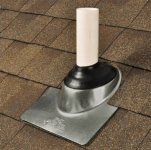Solar valves have a check valve, yes. Could water eventually get to the panels with just a hole? Depends on the pump and water speed and the distance the water has to be lifted. If you have a VSP running slowly it wouldn't likely happen. If it does, it won't leak at the VRV as they close on pressure, they are just a check valve that opens on vacuum.
In Winter, with the isolation valves closed water can't get to the panels. In the Summer it matters very little as they would not likely ever fill completely. Its been done that way for as many decades as I have done pools, well before VSPs were used, with no issues I am aware of. Even with a single-speed pump I don't recall ever seeing the panels fill if there was a hole in the diverter. The supply pipe, yes. The panels, no.
And, I have seen many systems that used Jandy and Hayward solar controller kits that came with standard valve, no hole, that work just fine. Only Pentair/Compool kits came with that type of valve and only Pentair makes them today.
Variable-speed pumps, with their slow water during filtration (if set properly), change everything about the system.
If it makes you more comfortable, get a valve with the check valve in it and be good, won't hurt anything. If you don't you may be second-guessing yourself and then your pool won't be Troublefree.




